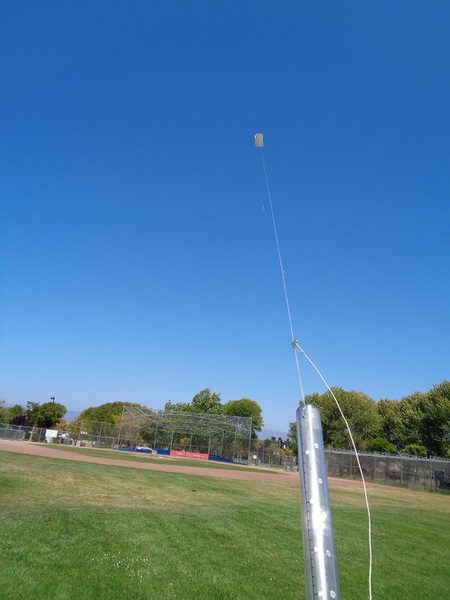
Kite Anemometers
Kite anemometry is the use of a kite as a sensor to measure the wind velocity, vector and turbulence. It is differentiated from other methods of kite meteorological data gathering in that information is obtained by observing the kite and the forces acting on it. This typically means that all substantial instrumentation is on the ground versus being flown on the kite as a payload.
In different configurations a kite anemometer can be used to examine wind speed at altitude, turbulence, and wind shear. The math behind a kite anemometer-- equations relating the pull of a kite to wind speed-- can also be used to determine the payload capacity of a kite in a specific wind speed.
You can contribute to this project by:
Expanding our documentation of kite anemometry research by reading research the annotated bibliography on this page and posting your notes on it with the tag "kite-anemometer", or reading and commenting on tagged research notes.
Replicating the TALA kite anemometer kit and documenting your use of it on with the tag "kite-anemometer." If you record your experiences elsewhere, please contact us and share.
Improving the documentation on kite wind speed meter models in the Kite Wind Speed Meter Github repository, as well as adding applications of those models.
Adding your comments to open issues in the TALA Github repository.
Forking the TALA repository and improving the design documentation, assembly instructions, or to add hardware or software for acquiring and interpreting data.
Background
In the late 70's a number of patents were made regarding a system in which a series of kites were to be used to monitor conditions near airports. This system became known as the Tethered Aerodynamic Lifting Anemometer (TALA) patented under US Patents 3,767,145, 4,058,010, 4,152,933 & 4,221,351. Inspired by this device, further research into it and the general concept of kite anemometry was conducted throughout the 1980's and early 1990's. No other commercial kite anemometers other than the TALA were produced.
An overview of the system is provided by @Ecta64 in these videos: